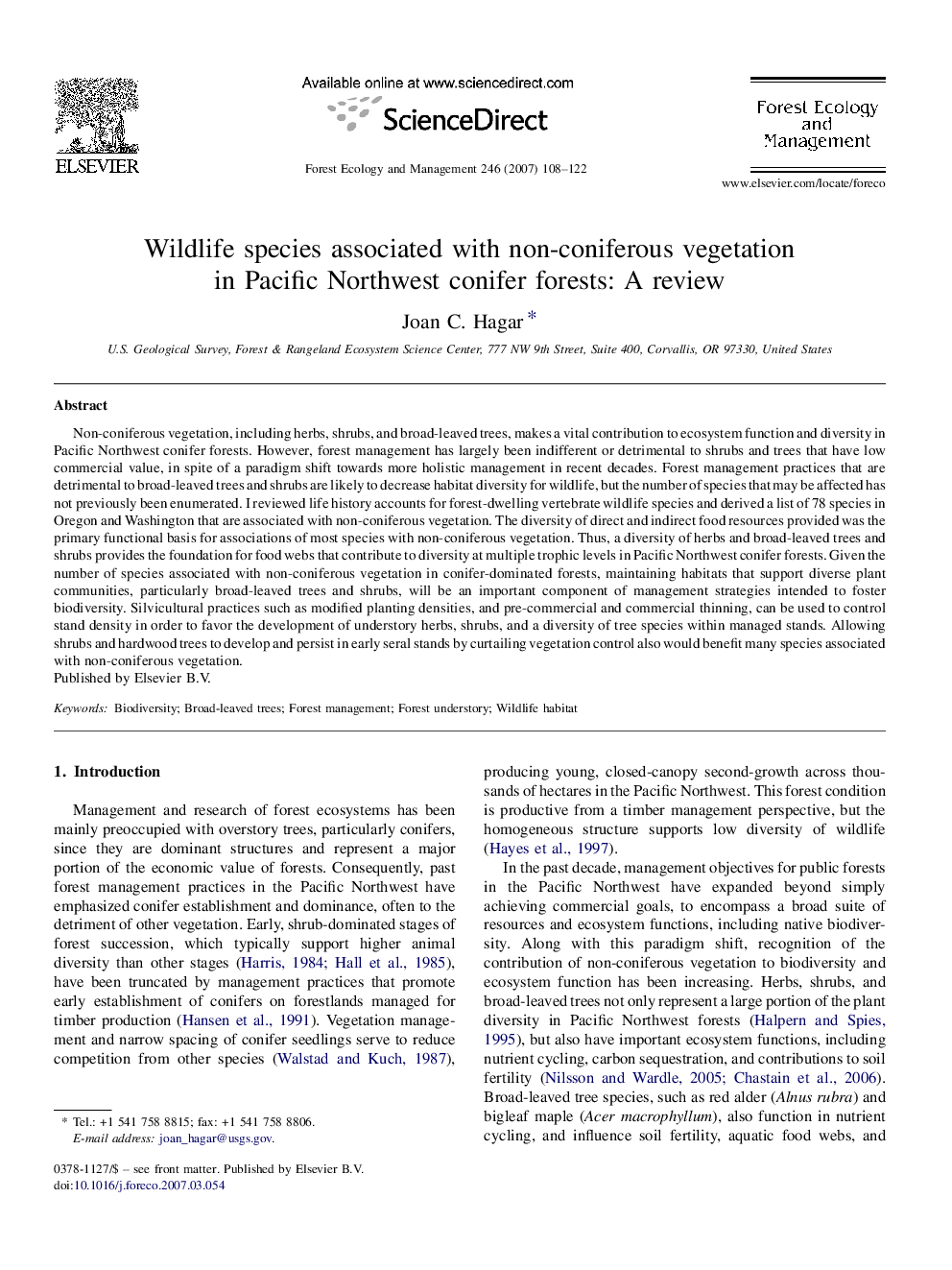| کد مقاله | کد نشریه | سال انتشار | مقاله انگلیسی | نسخه تمام متن |
|---|---|---|---|---|
| 90566 | 159388 | 2007 | 15 صفحه PDF | دانلود رایگان |

Non-coniferous vegetation, including herbs, shrubs, and broad-leaved trees, makes a vital contribution to ecosystem function and diversity in Pacific Northwest conifer forests. However, forest management has largely been indifferent or detrimental to shrubs and trees that have low commercial value, in spite of a paradigm shift towards more holistic management in recent decades. Forest management practices that are detrimental to broad-leaved trees and shrubs are likely to decrease habitat diversity for wildlife, but the number of species that may be affected has not previously been enumerated. I reviewed life history accounts for forest-dwelling vertebrate wildlife species and derived a list of 78 species in Oregon and Washington that are associated with non-coniferous vegetation. The diversity of direct and indirect food resources provided was the primary functional basis for associations of most species with non-coniferous vegetation. Thus, a diversity of herbs and broad-leaved trees and shrubs provides the foundation for food webs that contribute to diversity at multiple trophic levels in Pacific Northwest conifer forests. Given the number of species associated with non-coniferous vegetation in conifer-dominated forests, maintaining habitats that support diverse plant communities, particularly broad-leaved trees and shrubs, will be an important component of management strategies intended to foster biodiversity. Silvicultural practices such as modified planting densities, and pre-commercial and commercial thinning, can be used to control stand density in order to favor the development of understory herbs, shrubs, and a diversity of tree species within managed stands. Allowing shrubs and hardwood trees to develop and persist in early seral stands by curtailing vegetation control also would benefit many species associated with non-coniferous vegetation.
Journal: Forest Ecology and Management - Volume 246, Issue 1, 16 July 2007, Pages 108–122